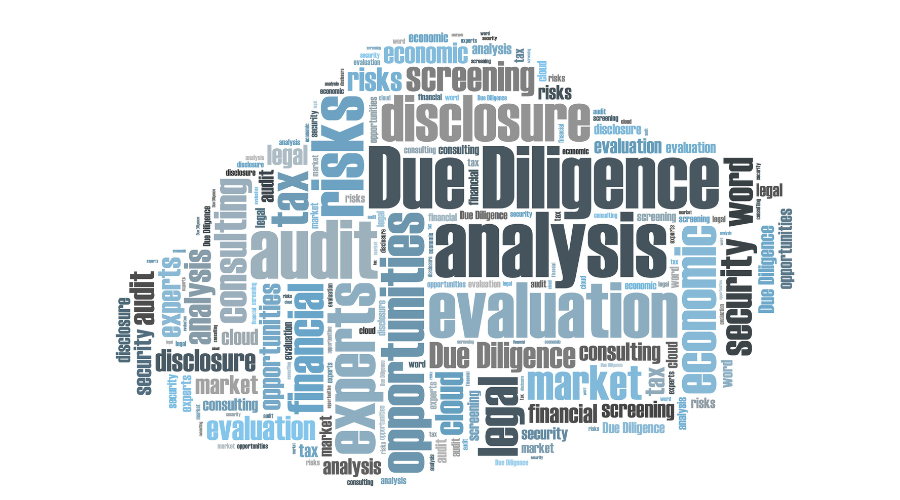The technology, or rather the integration, of some of Australia’s most prominent mergers and acquisitions (M&A) can present a bump in the road and, often enough, a point of failure. Risking failure here can not be in any business leader’s playbook when options are available to mitigate this risk and for a seamless transition in tech stacks. Australian private equity activity experienced an upswing in value and volume in 2024, with US$34.5 billion spent on over 160 deals (White & Case). This was a twofold increase in value year on year and a 13 percent increase in deal volume. Despite such growth, and for a number of issues, well over 70% of mergers and acquisitions fail, according to Harvard Business Review. Technology integration plays a major part to this 70% in determining post-merger success.
Without careful planning, organisations become vulnerable to system incompatibility, data silos, and cyber attacks. These issues can impact all facets of the business. Proper planning around IT integration can be the surefire way businesses can overcome danger and make the technology infrastructure meaningful for the enterprise mission. This article explores the four essential stages of M&A technology integration, offering an easy and stepped-out strategic approach to avoid disruption and maximise your new gains.

1. Pre-Merger Due Diligence: Establishing the Foundation
The first and most crucial step in the M&A integration process of merging tech stacks is practising due diligence by identifying risks, compatibility issues, and compliance requirements early on. This foresight approach can prevent costly mistakes after the merger.
During this stage, evaluate the existing systems and develop a roadmap for integration. A key challenge here lies in assessing the acquired company’s legacy systems. If you render these systems outdated or non-compliant, they can create security risks and operational inefficiencies. At this point, a proper evaluation of vendor contracts and licensing agreements can help determine whether they align with the merged entity’s technology architecture.
Key Considerations:
- Technology Stack Review: Assess software, hardware, and third-party integrations to identify redundancies and gaps.
- Cyber Security Posture: Examine security frameworks, compliance standards, and potential vulnerabilities.
- Regulatory Compliance: Ensure alignment with industry regulations such as the Privacy Act 1988 and other data governance requirements.
- IT Staff and Operational Readiness: Evaluate the readiness of IT teams to support integration and mitigate disruptions.
2. Integration Planning and Strategy: The Smart Play
With risks and opportunities now identified, the next step is to develop a strategic IT integration plan to align systems into your own architecture. A well-planned integration strategy minimises downtime, ensuring the technology supports the business from Day One. One of the biggest challenges in this phase is managing employee expectations and any resistance to change. Clear communication, training sessions, and dedicated IT support will go a long way to facilitating a smoother transition for all concerned.
At this point, it would benefit you to establish a governance framework to oversee the integration process. This will involve assigning leadership roles, defining KPIs, and setting up a dedicated integration team to monitor progress and address challenges.
Key Focus Areas:
- Data Migration and Management: Establish a roadmap for consolidating databases, data centres, and information systems.
- Network and Infrastructure Integration: Decide whether to maintain separate networks, merge systems, or develop a hybrid approach.
- Application and System Compatibility: Assess whether critical platforms such as ERP and CRM can be integrated or need replacement.
- Change Management: Ensure employees receive the necessary training and support during the transition.

3. Post-Merger Implementation: Ensuring Stability
With a solid integration plan in place, execution now becomes the priority. This phase focuses on system consolidation, governance alignment, and operational continuity. This phase requires meticulous execution to avoid disruptions in business operations. Cyber security is also a critical focus area at this point. Implementing robust security protocols, monitoring network activity, and ensuring compliance with data protection regulations are essential to securing the IT environment.
Another challenge in this phase is system redundancy. Many companies find themselves managing duplicate applications and overlapping functionalities, which can lead to increased IT costs and inefficiencies. Conducting a system audit and decommissioning unnecessary applications can streamline operations and improve cost efficiency.
Moreover, IT teams must ensure that all integrations align with business objectives. Regular performance assessments and feedback loops should be established to address technical issues and optimise system performance. Employee training should continue beyond the initial transition phase to ensure that staff can effectively leverage new technology tools.
Core Activities:
- System and Application Consolidation: Transition IT services to unified governance under the acquiring company.
- Cybersecurity Enhancements: Upgrade and integrate security measures, including firewalls, encryption, and threat detection.
- IT Governance and Compliance Alignment: Ensure new IT systems comply with internal and external regulatory requirements.
- Service Continuity and Support: Establish helpdesks and monitoring systems to address real-time technical challenges.

4. Risk Management and Performance Optimisation
Post implementation, risk mitigation and optimisation strategies are ongoing and needed to sustain success and drive continuous improvement. Risk management requires regular monitoring and assessment. Companies should proactively identify emerging risks and develop contingency plans to mitigate disruptions. This includes conducting cybersecurity audits, reviewing vendor agreements, and optimising infrastructure for future growth.
Another critical aspect of this phase is measuring the success of IT integration. Establishing clear performance metrics allows organisations to evaluate whether integration goals have been met and identify areas for improvement. Metrics such as system uptime, incident response times, and user satisfaction scores provide valuable insights into IT performance and operational efficiency.
Furthermore, organisations should leverage data analytics and automation tools to enhance IT operations and drive innovation. Implementing AI and machine learning (ML) solutions can help streamline processes, detect anomalies, and improve organisational decision-making.
Ongoing Priorities:
- Data and IP Risk Mitigation: Secure intellectual property and customer data to prevent legal or reputational damage.
- Vendor and Third-Party Risk Management: Reassess contracts to ensure continued compliance and service quality.
- Infrastructure Scalability: Plan for future growth by optimising IT capacity and cloud adoption.
- Performance Metrics and KPIs: Define cost savings, system uptime, and user adoption benchmarks to measure IT integration success.
Further Considerations For Long-Term Success
When deploying M&A integrations, especially in environments involving mergers, acquisitions, or rapid scaling, several strategic considerations should be kept in mind to ensure long-term success:
- Minimising Small Errors at Scale: Minor technology misconfigurations can accumulate and cause significant operational friction as organisations expand or integrate multiple entities. Prioritising detailed system audits and establishing standardised configuration protocols early can prevent these small errors from becoming larger challenges over time.
- Facilitating Seamless Communication Across Entities: Consistent and effective communication between newly integrated teams fosters collaboration and enhances the sense of a unified organisation. Reliable communication and collaboration platforms that are scalable and user-friendly are essential to breaking down silos.
- Predictable Pricing for Scalability: A clear, predictable cost structure is essential for businesses growing through acquisitions. Leveraging scalable IT infrastructure and software licensing models ensures that IT budgets remain controlled while supporting sustainable growth.
- Mitigating Inherited Cyber Security Risks: Acquiring multiple smaller businesses can introduce new regulatory and compliance burdens. Identifying cyber security vulnerabilities during the due diligence stage is critical. Implementing enterprise-wide security standards, including robust access controls, encryption protocols, and regular audits, will help ensure strong cyber security hygiene before and after acquisition.
- Post-Acquisition Technology Standards: Many acquired companies may lack mature internal IT resources. Establishing clear post-acquisition technology standards is vital to maintaining high security, compliance, and efficiency levels. Standardising systems, processes, and policies ensure alignment among all parties involved.
Conclusion
Integrating your M&A technology requires meticulous planning, execution, and ongoing evaluation. Business leaders who follow a structured approach—from due diligence to optimisation—can ensure a seamless transition while minimising disruptions. By adopting a proactive strategy, companies can enhance operational efficiency, strengthen cybersecurity, and maximise the value of their merger. Success lies in early planning, effective change management, and continuous performance monitoring.
BITS Can Merge Your Tech Integrations With Your Expectations
BITS has extensive experience guiding businesses through complex M&A IT integrations. Our team provides tailored solutions to mitigate risks, ensure compliance, and align technology with business objectives.
Contact us today or email bernard.mangelsdorf@bitsgroup.com.au to discuss how we can support your M&A transition.
Related Blogs
- 5 Reasons Why You Need A Managed IT Service
- 4 Signs Your Business Needs A Managed Cloud Services Provider
- 2 Important Ways To Protect Your Business IT System





